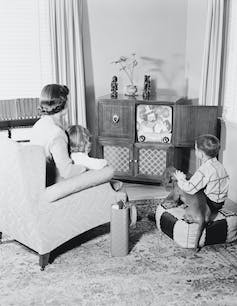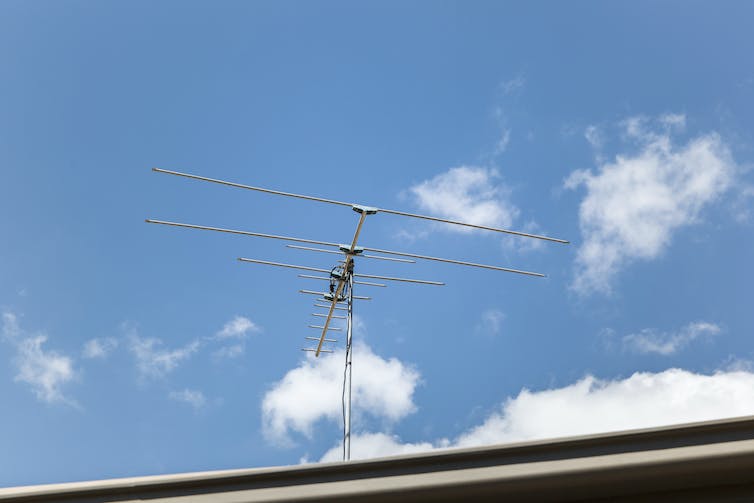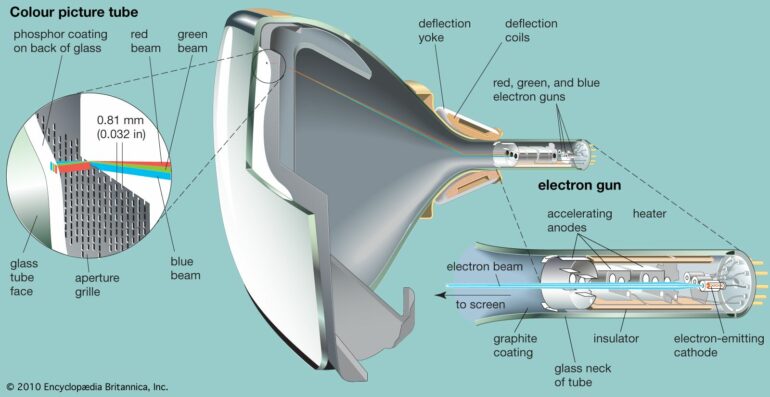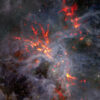
Curious Kids is a series for children of all ages. If you have a question you’d like an expert to answer, send it to [email protected].
How does a TV work? – Caden, age 11
Look at your modern-day TV, and you see nothing less than a technological miracle.
Scientists began experimenting with the concept of television more than a century ago. But decades would pass before the Radio Corporation of America brought it to the public at the 1939 World’s Fair. More time passed before TV sets were in stores – and even then, it took awhile until most people had one. In 1950, fewer than 10% of Americans owned a television. By 1959, that number had grown to 85%.

In the 1950s, television sets were bulky and the picture was in black and white.
H. Armstrong Roberts/Retrofile RF via Getty Images
During the ‘50s, TVs were expensive, screens were small and the picture wasn’t always crystal clear.
What’s more, early TV programs were in black and white; color wasn’t in wide use until the mid-1960s.
Viewers didn’t have a lot of choice, either. Instead of hundreds of channels to choose from, most cities offered only three or four.
And DVR didn’t exist. Programs appeared on a specific day at a particular time, and if you missed it – you missed it.
As a professor of electrical and computer engineering, I am amazed by the remarkable advances of this technology in only a few decades.
Yet whether an early television with a 5-inch screen, or one of today’s smart TVs that practically cover the wall, your set still has three primary functions: to receive audio and video data; to use that data to present the viewer with sound and a picture; and to provide the viewer with a way to set the channel and the volume.

A rooftop antenna receives the TV signal sent by the local television station.
Tim Allen/iStock via Getty Images Plus
Radio waves, transmission towers and antennas
Early TVs worked with the use of “analog signals” – essentially radio waves containing both the picture and sound of a television program.
Simply put, here’s how it worked: Using a giant transmission tower, the local television station repeatedly sent those radio waves through the air during the broadcast day. Antennas on the roofs of buildings and homes in the community intercepted those waves and, through a cable, transported the signal to the television sets inside.
There, the TV unscrambled the signal and turned it into a picture with sound. What you saw and heard wasn’t as sharp as today’s TVs, but it was good.
By 2009, TV stations replaced analog signals with digital TV signals, which is the standard used today. HDTV, or high-definition television, has an amazing picture quality compared to earlier TVs. Digital signals are still transmitted using radio waves, but the TV picture is encoded in binary –…



